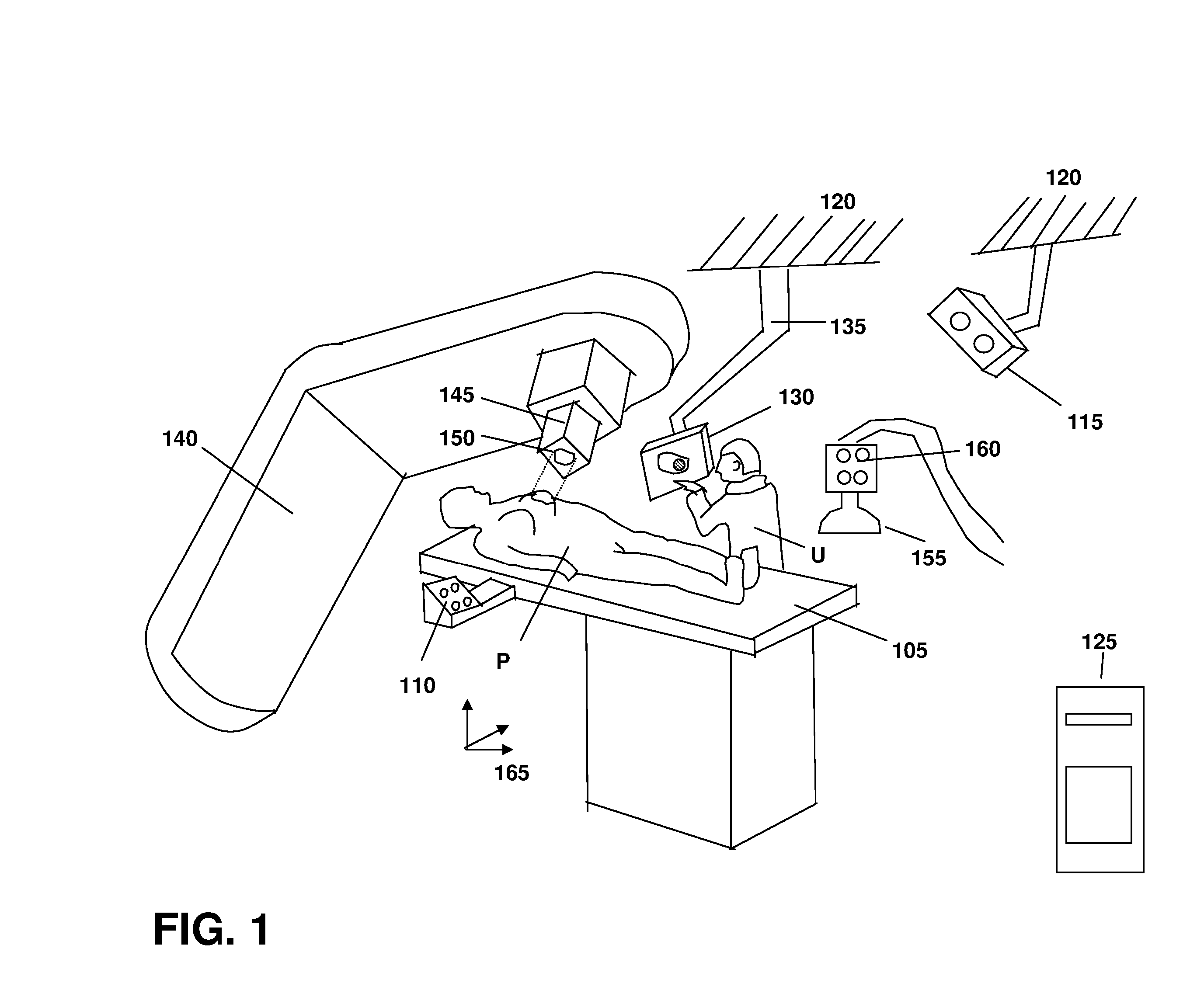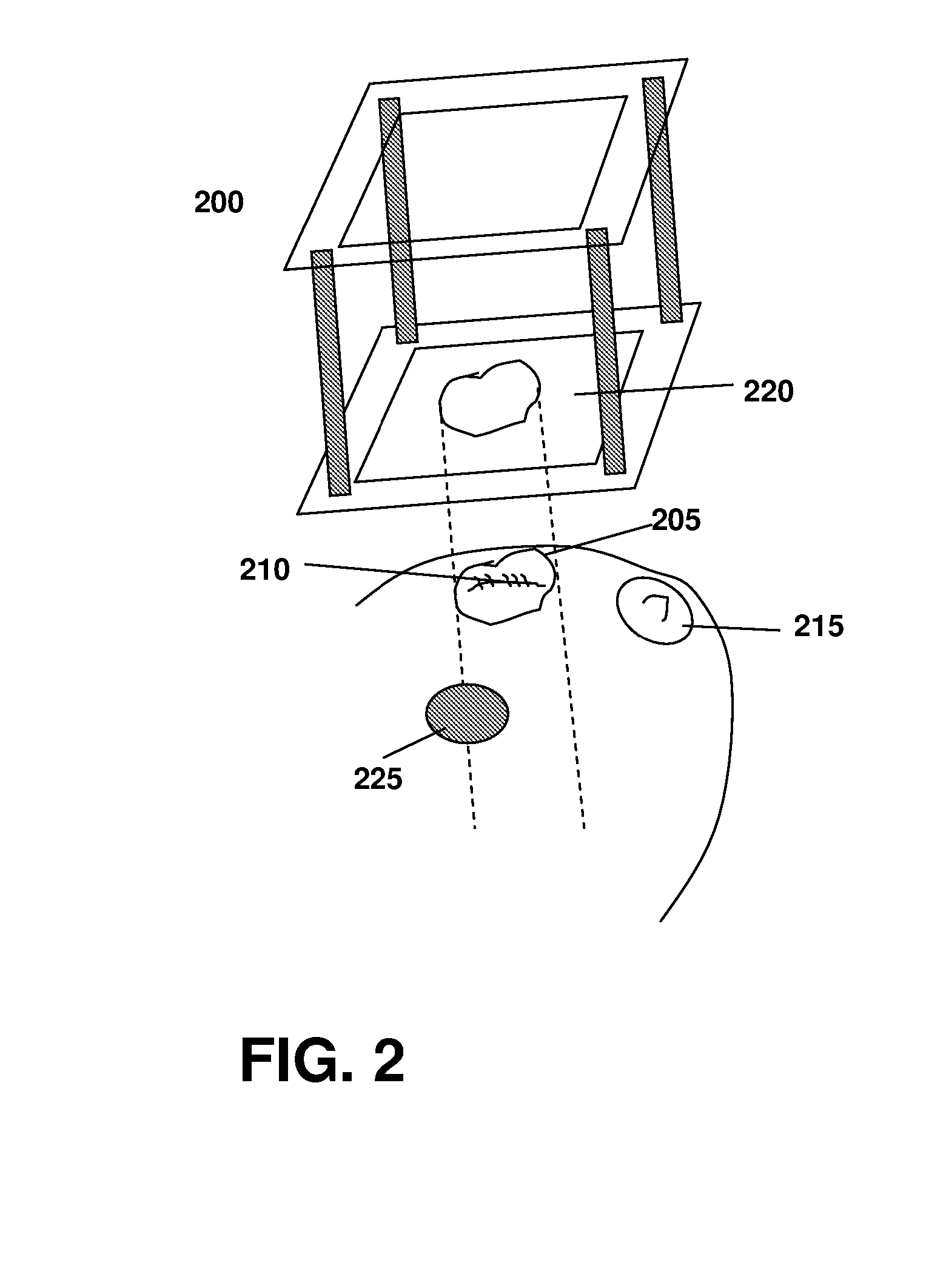Incorporating Internal Anatomy In Clinical Radiotherapy Setups
a technology of internal anatomy and clinical radiotherapy, which is applied in the field of improving clinical setups in radiotherapy, can solve the problems of poor indication of the actual location of the underlying tumor bed, and achieve the effect of accurate patient setups and facilitate the combination of images
- Summary
- Abstract
- Description
- Claims
- Application Information
AI Technical Summary
Benefits of technology
Problems solved by technology
Method used
Image
Examples
Embodiment Construction
[0021]FIG. 1 illustrates one embodiment of the invention in which a patient P is situated on a patient support device such as a treatment couch 105. The couch 105 is tracked using a set of reflecting or emitting markers 110, which are detected and monitored by an optical camera 115 attached to the ceiling 120 of the treatment room. Alternatively, the camera may be attached to other fixed and known positions in the room such as walls, beams and / or fixtures. The output of the camera 115 is transmitted (using wired or wireless channels) to a computer 125 having an associated visual display 130. In some instances, the computer 125 is located outside the treatment room to avoid radiation damage. The visual display 130 can be cart-based but is preferably mounted to a swing arm 135 attached to the ceiling 120, such that the user U (e.g., a radiation therapist, a dosimetrist, a medical physicist or a radiation oncologist) can move the visual display 130 to any convenient location. A linear ...
PUM
 Login to View More
Login to View More Abstract
Description
Claims
Application Information
 Login to View More
Login to View More - R&D
- Intellectual Property
- Life Sciences
- Materials
- Tech Scout
- Unparalleled Data Quality
- Higher Quality Content
- 60% Fewer Hallucinations
Browse by: Latest US Patents, China's latest patents, Technical Efficacy Thesaurus, Application Domain, Technology Topic, Popular Technical Reports.
© 2025 PatSnap. All rights reserved.Legal|Privacy policy|Modern Slavery Act Transparency Statement|Sitemap|About US| Contact US: help@patsnap.com



